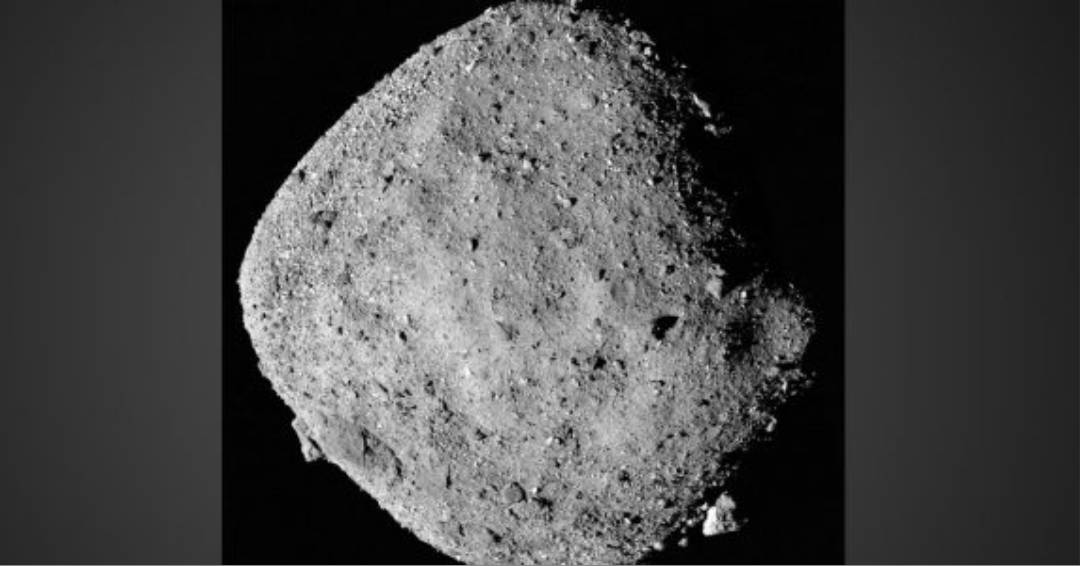
NASA’s historic mission, which brought the first asteroid samples from deep space, reached its thrilling climax as the Osiris-Rex spacecraft delicately deposited its precious cargo in the Utah desert after a remarkable seven-year odyssey.
In a meticulously orchestrated maneuver, Osiris-Rex released the sample capsule from a staggering 63,000 miles (100,000 kilometers) out during a close Earth flyby. The capsule touched down gracefully on a remote military expanse, while the mothership embarked on its next celestial rendezvous.
Scientists anticipate that the capsule contains a substantial amount of material from the carbon-rich asteroid Bennu, often likened to at least a cup’s worth of celestial rubble. However, confirmation of the exact contents will only come once the container is unlocked, as some material spilled and floated away during the collection process three years ago, when rocks jammed the container’s lid.
Japan stands as the sole other nation to have returned asteroid samples, having secured approximately a teaspoon’s worth in two separate missions.
The precious pebbles and cosmic dust now safely in NASA’s possession constitute the most substantial haul from beyond our moon. These preserved remnants, formed at the dawn of our solar system some 4.5 billion years ago, hold the potential to unravel the mysteries of Earth’s origin and the emergence of life.
Osiris-Rex embarked on its billion-dollar mission in 2016, arriving at Bennu in 2018 and employing a remarkable vacuum-equipped arm to capture fragments from the small, roundish space rock in 2020. By the time it returned to Earth, the spacecraft had traversed an astonishing 4 billion miles (6.2 billion kilometers).
The extensive recovery operation in Utah featured helicopters and a temporary clean room set up at the Defense Department’s Utah Test and Training Range. The samples will be transported to NASA’s Johnson Space Center in Houston, where they will join the hundreds of pounds (kilograms) of moon rocks brought back by Apollo astronauts over five decades ago.
Dante Lauretta, the mission’s lead scientist from the University of Arizona, will accompany the samples to Texas. He acknowledged that the real moment of truth lies in the upcoming container opening, given the uncertainty surrounding the quantity within. Engineers estimate the canister contains 250 grams (8.82 ounces) of Bennu material, with a potential margin of 100 grams (3.53 ounces) in either direction. Lauretta is confident that, even at the lower end, this surpasses the mission’s minimum requirement.
The exact measurement will take a few weeks, according to NASA’s lead curator, Nicole Lunning, with a public presentation scheduled for October.
Bennu, currently orbiting the sun at a distance of 50 million miles (81 million kilometers) from Earth, measures roughly one-third of a mile (one-half of a kilometer) across, resembling the Empire State Building in size but shaped like a spinning top. It’s thought to be a fragment from a much larger asteroid.
Osiris-Rex’s detailed observations of Bennu revealed a rocky, crater-filled surface with loose material. During the sample collection, the spacecraft’s vacuum arm sank deeper than expected, capturing more material and jamming the lid.
These observations could prove crucial in the late 22nd century, as Bennu is projected to approach Earth dangerously in 2182, potentially on a collision course. The insights gleaned by Osiris-Rex will be invaluable for any future asteroid-deflection efforts.
The mission continues as Osiris-Rex now pursues asteroid Apophis, scheduled to reach it in 2029.
This mission marks NASA’s third successful sample return from deep space via robotic missions. The Genesis spacecraft carried solar wind bits in 2004, though the samples suffered damage due to a parachute failure upon landing. The Stardust spacecraft, in 2006, triumphantly delivered comet dust to Earth.
NASA’s plans to retrieve samples from Mars remain on hold following an independent review board’s critique of cost and complexity. The Perseverance rover, however, has spent the past two years diligently collecting core samples for future transport to Earth.

Post Your Comments